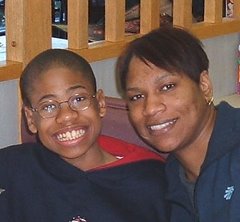FOR IMMEDIATE RELEASE: July 14, 2005
Contact: EWG Public Affairs, 202-667-6982
Study Finds Industrial Pollution Begins in the Womb
Hundreds of Toxic Chemicals Measured in Newborn Babies
WASHINGTON - Not long ago, scientists believed that babies in the womb were largely protected from most toxic chemicals. A new study helps confirm an opposite view: that chemical exposure begins in the womb, as hundreds of industrial chemicals, pollutants and pesticides are pumped back and forth from mother to baby through umbilical cord blood.
Environmental Working Group (EWG) commissioned laboratory tests of 10 American Red Cross cord blood samples for the most extensive array of industrial chemicals, pesticides and other pollutants ever studied. The group found that the babies averaged 200 contaminants in their blood. The pollutants included mercury, fire retardants, pesticides and the Teflon chemical PFOA. In total, the babies' blood had 287 chemicals, including 209 never before detected in cord blood.
The blood samples came from babies born in U.S. hospitals in August and September of 2004. The study, called Body Burden: The Pollution in Newborns, tested each sample of umbilical cord blood for an unprecedented 413 industrial and consumer product chemicals. The study(www.ewg.org/reports/bodyburden2/) is part of an important new science that measures toxins in people - the human body burden."
For years scientists have studied pollution in the air, water, land and in our food. Recently they've investigated its health impacts on adults. Now we find this pollution is reaching babies during vital stages of development," said EWG Vice President for Research Jane Houlihan. "These findings raise questions about the gaps in our federal safety net. Instead of rubber-stamping almost every new chemical that industry invents, we've got to strengthen and modernize the laws that are supposed to protect Americans from pollutants."
U.S. industries manufacture and import approximately 75,000 chemicals, 3,000 of them at over a million pounds per year. Yet health officials do not know how many of these chemicals pollute fetal blood and what the health consequences of in utero exposures might be. Many of these chemicals require specialized techniques to detect. Chemical manufacturers are not required to make available to the public or government health officials methods to detect their chemicals in humans, and most do not volunteer them.
EWG's Houlihan said that had her group been able to test for more chemicals, it would almost certainly have detected them.
Full Report and following topics are linked on url:
http://www.ewg.org/reports/bodyburden2/newsrelease.php
1: Executive summary
2: Babies are vulnerable to chemical harm
3: Human health problems on the rise
4: Recommendations
Detailed findings
Methodology
Questions and Answers
References
News Release
News Advisory
About This Report
Related News Coverage
The Environmental Working Group and Environmental Working Group Action Fund are nonprofits that use the power of information to protect public health and the environment.
For more information and resources on autism, go to:
http://www.autismconcepts.com/.
Forget what you haven't heard… Family site shares news, resources, announcements and free or low-cost ways to help us manage day-to-day living with autism.
Crystal Brown

About Me

- Crystal
- AutismConcepts.com and Child-Autism-Parent-Cafe.com share a large collection of useful autism information, resources, and how-to articles written by authors who are touched by autism, offering practical solutions to families. Particularly minority and underserved families and caregivers who may not know what to do or where to go for help.
MJ And Me

Blog Archive
-
▼
2005
(194)
-
▼
July
(28)
- Autism - Cut The Crap
- Boys Take Stand In T-Ball Case
- T-ball victim invited to Oakland A's game
- Scientists Advance Understanding of the Role of a ...
- Study reveals parents' MMR views BBC News
- Study: Children with Autism Have Distinctly Differ...
- Tee-ball coach charged in assault
- Special education goes home
- A Kennedy Fuels Autism Debate
- Free Kids and Teens Printable Coloring Pages
- Study Finds Industrial Pollution Begins in the Womb
- Toxic elements found in infants' cord blood
- Parents use alternative method to treat daughter's...
- Should I Vaccinate My Child?
- GAO Report - Child Welfare: Better Data and Evalua...
- Autism, Mercury and the California Numbers
- Study: Positive touch, the implications for parent...
- The Age of Autism: Both Sides Now
- Number of Autism Cases Declines in Calif.
- What is MTHFR Mutation? - Toward Understanding the...
- Mistrust rises with autism rate
- Autism drug cuts aggression
- Autism, mercury, and politics by Robert Kennedy Jr.
- The Age of Autism: Dismaying 'Times'
- CODEX Threat to Supplement Market
- Vaccine tie to autism gains new supporters
- Study: New model may better predict outcomes for c...
- Study questions extent of autism in the U.S.
-
▼
July
(28)